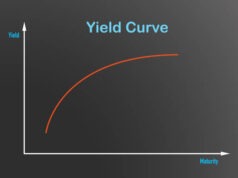The technology for medical alert systems for seniors have been rapidly changing – and 2022 will be no different. The industry is looking at the year ahead to reshape the understanding of traditional technology and design. Currently, there is a small group of market-leading medical alert systems that’s been captivating consumers.
The market for these systems, (also known as Personal Emergency Response Systems or PERS) has been steadily growing in recent years. According to Alexa Reports, the industry will be valued at more than USD 3.32 billion by 2025, a sharp increase from its USD 1.71 billion market value in 2017.
Current indications revealed that the industry will experience an average CAGR of 8.88% between 2017 and 2025.
The report further indicated that North America is still one of the key driving forces behind the rapid growth and success of the industry. But much like other key developed nations across the world, PERS and other medical alert systems are now finally accessible in developing nations, narrowing the market gap, leading to improving sales and global receptiveness.
The coming year is set to be another rewarding year for manufacturers and leading market brands. Advancements and rapid improvements in the medical sector have given these devices new meaning for wearers.
From faster fall detection technology, communication software, and more stylish devices – here’s what we can expect from medical alert systems in 2022.
Faster and More Secure Network Connectivity
At the end of December 2021, the Federal Communications Commission (FCC) warned PERS users that mobile carriers will be shutting down their 3G networks. This comes after the introduction of 5G technology at the start of 2020, as mobile carriers and network providers are looking to bring onboard better and more advanced mobile network services.
While the FCC is holding a finger on the pulse regarding the switch from 3G to 5G, medical alert systems that are integrated with mobile apps and cell phones will only become better, faster, and more reliable.
There’s already talk that we might expect 6G in the next few years.
This will enable the wearer to have better network connectivity, both in and out of network range. The switch will also push developers and manufacturers to revisit standard, or older models and make the necessary adjustments.
Already systems such as Medical Guardian and Bay Alarm Medical alert systems, among others, allow for mobile connectivity via AT&T cell services.
Connecting PERS devices with mobile phones and cell services such as AT&T makes it easier for wearers to effectively communicate and request medical assistance in the event of an emergency. Upgrading network connectivity doesn’t come without its hurdles, but it’s a massive leap forward for some of the best medical alert systems currently on the market.
Better Market Variety
Throughout the last few years, some market brands have come and gone, and by now, wearers and consumers are fully aware of the various types of brands currently available.
Although there’s a wide range of different devices to choose from, in the coming year we might see this improve. New devices, with better features, stylish designs, and integrated technology will become stock standard for the industry in 2022.
Consider how much these devices have already changed in the last few years. From the first devices which only used landline connectivity, to new devices that can detect and monitor heart rate, sleeping patterns, and track routine prescriptions.
PERS devices are compact with a host of great features. WellBe Hands Free, LifeStation, and LifeFone are some of the most notable medical alert systems already available on the market. With standard features including, smoke and carbon monoxide detectors, smart speaker, and Amazon Alexa connectivity.
The adoption of these devices at home and by caregivers has given them the ability to be more connected with their surroundings, and those who require dire medical attention.
In the year ahead, we can expect leading brands to only build on top of what they already have, and know of their devices. Adding better features, and making these devices more accessible for different demographics.
More Affordable Options
For those who make use of any type of medical alert system, or who’s been looking into getting one – you’ll notice that prices for these devices vary across the board.
There is no standard industry pricing that regulates how manufacturers and authorized retailers can price these devices.
Affordability is one of the key driving factors that will influence industry growth in the coming year, as most Americans are rapidly adjusting their budgets as the cost of living is set to immensely increase over the next few months.
But as demand is expected to grow, and more contenders step onto the market, we might see a shift in pricing structures and subscriptions.
Furthermore, price is still one of the main factors that influence consumers and how they view medical alert systems.
Some brands such as Mobile Help have been praised for offering the most budget-friendly subscription options for users. Monthly fees range between $19.95 and $44.95, with additional activation or equipment fees. The Phillips Lifeline is also a top contender, offering the best AARP discount for members on its already low monthly fees that range between $29.95 and $49.95.
But it’s not only the physical monthly subscription costs we might see declining in the coming year. Additional extra features such as fall detection, activation fees, and equipment fees might also be waived, as brands are now battling against growing competition.
These added benefits and features might now be captured under one set monthly subscription plan that can better cater to the consumer and their budget.
Device Diversification
As already mentioned, we know that there are a wide variety of these medical alert devices available on the market – all poised to assist in the advent of a medical emergency.
Device diversification’s been ongoing for years, as medical professionals seek advanced methods that improve the health and safety of consumers.
One such trend is the introduction of progressive medical alert systems that can be worn by the user. This can either be in the form of a bracelet, pendant, or ring. While these devices are small and wireless – some industry leaders are now pushing the boundaries, bringing to life enhanced epilepsy bracelets.
As compact and lightweight as these bracelets maybe, they house an assortment of medical features that can assist during a medical emergency. This helps wearers to effectively communicate with health professionals, friends, and family in the event of an epileptic seizure.
While devices are becoming more diverse, looking to address a plethora of medical conditions and treatments, there’s a strong focus on tying together what traditional research and understanding of medical conditions can do for the overall expansion of the industry in 2022.
The Takeaway
The enlargement of the medical alert systems industry is seen to surpass current predictions, as a global community looks towards these devices as an affordable and convenient solution to their medical alert needs.
The current standing gives manufacturers, researchers, and developers a better leverage to create devices that will only catapult the entire industry into the next generation of wearable technology.
While these findings are mainly based on market predictions, and indicators, newer and more diverse knowledge will have the best medical alert systems becoming more accessible, affordable, and above all more forward-thinking.


































